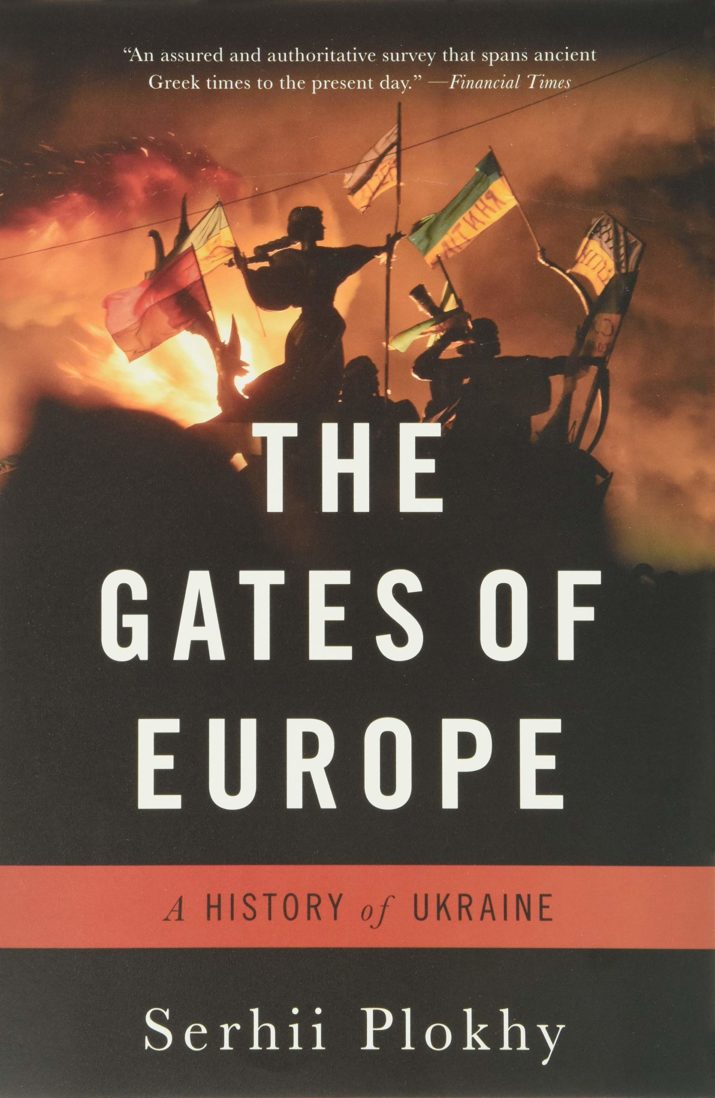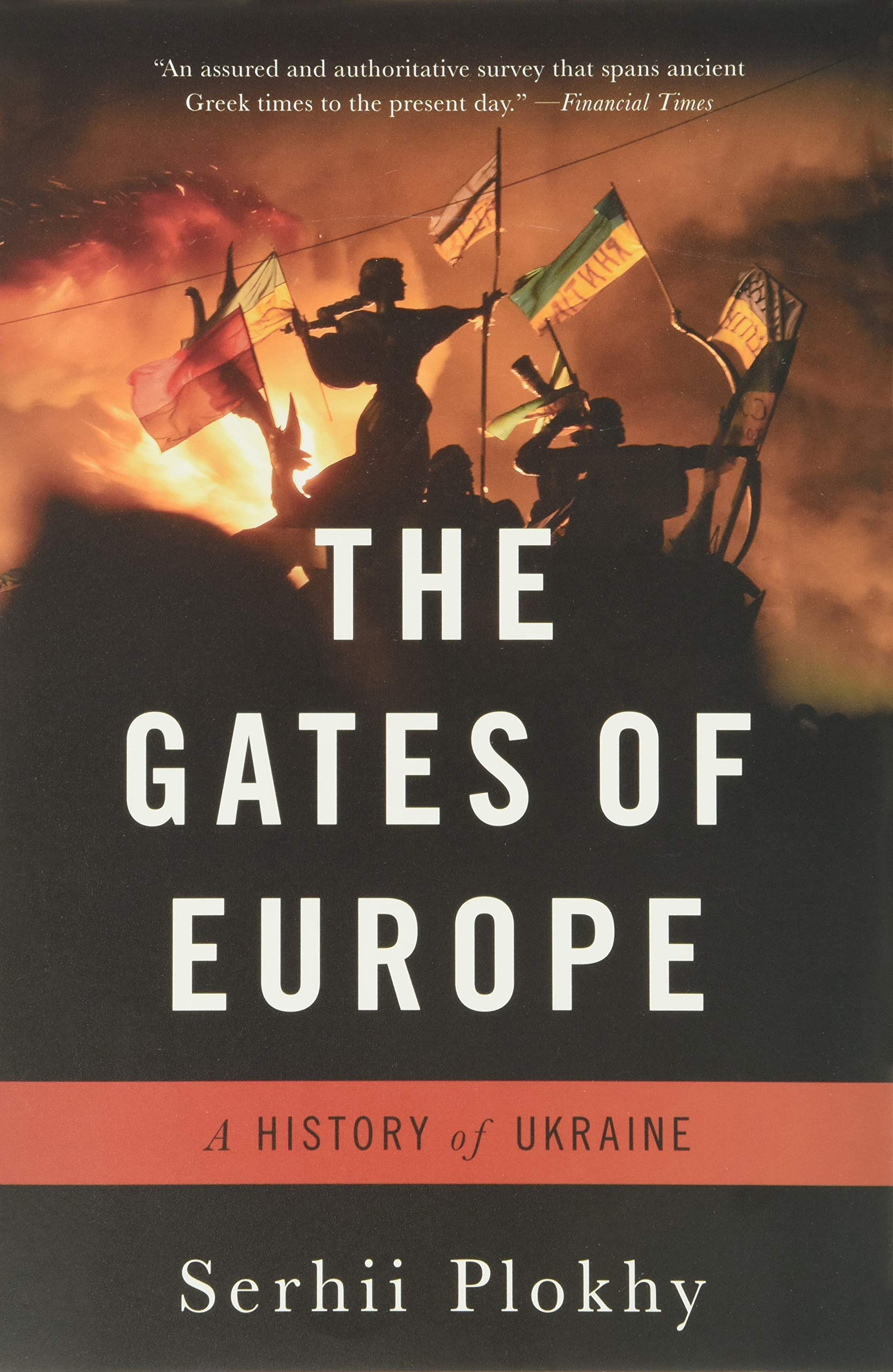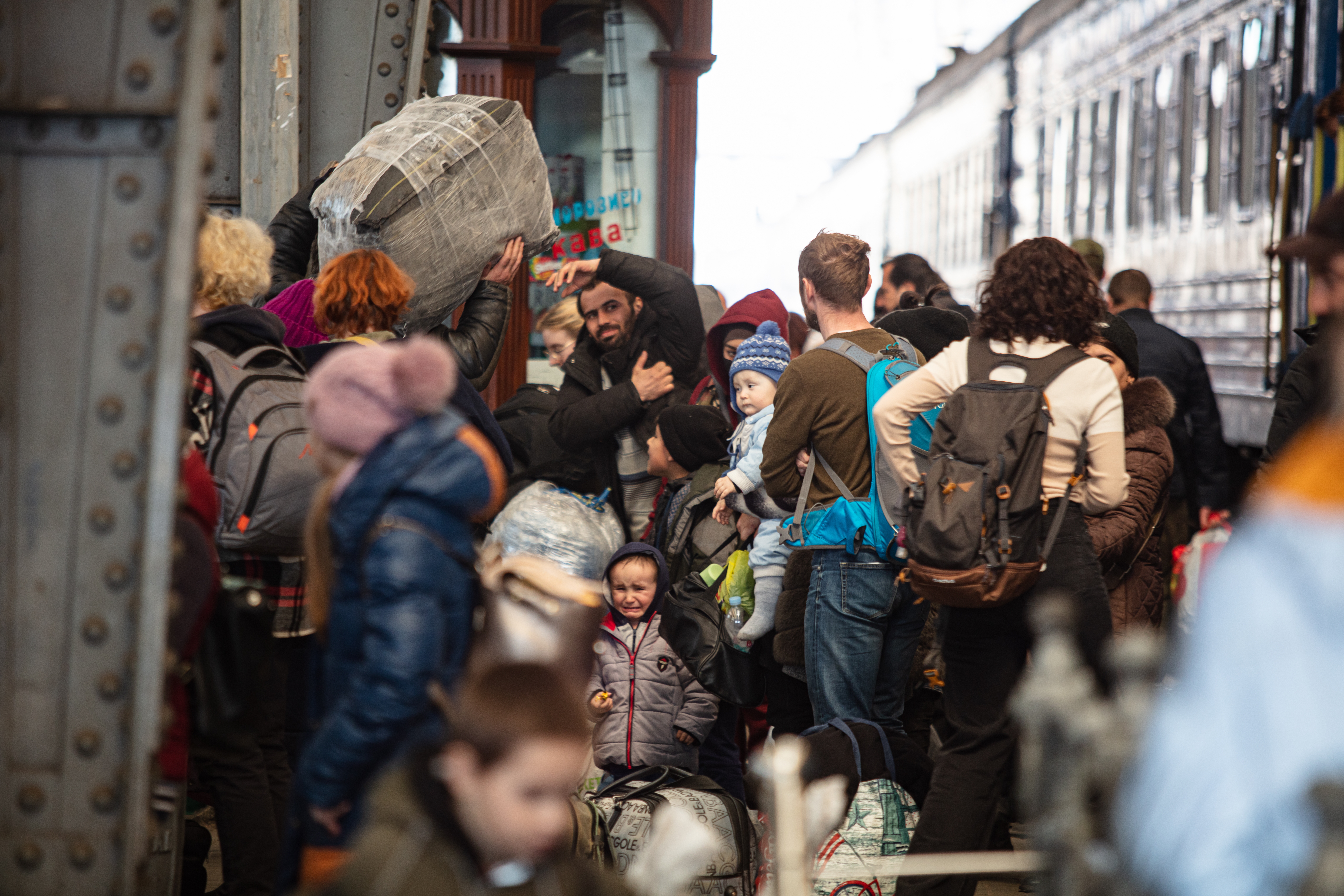

This is part of a series on the Ukraine Crisis.
Just over a year ago, the eminent historian of Ukraine, Serhii Plokhy, published a revised version of his 2015 book, The Gates of Europe. In the context of Russia’s unprovoked war against Ukraine launched in February, Plokhi’s introductory words resound even more forcefully: “Ukrainians probably have just as much right to brag about their role in changing the world as Scots and other nationalities about which books have been written asserting their claim to have shaped the course of human history.”
Time will tell whether recent Ukrainian victories, aided by European and North American allies, will vanquish Putin’s drive for a twentieth-first century Russian Empire and achieve Ukraine’s long-standing goals of joining the European Union and NATO. What is clear from Plokhy’s account, however, is that the current contest between East and West in Ukraine has a very long history, although none as brutal as what we have seen in the last several months. Examples of the tug-of-war between East and West run through the narrative: foremost among them the schisms between the Russian Orthodox Church and the Roman Catholic and Uniate Churches (or between Christianity, Judaism, and Islam) and between the traditions of Western democracy and state sovereignty and Eastern—later Soviet—imperialism and authoritarianism. From ancient times to the election of President Volodymyr Zelensky, and the first impeachment trial of former US president Trump, Plokhy explores how these countervailing pressures have shaped a distinct Ukrainian identity.
The book’s twenty-eight chapters, divided into five sections, do a masterful job of tracing Ukraine’s immense diversity—geographical, economic, political, cultural, and religious—and how Ukrainian politicians, intellectuals, military, and religious leaders have navigated the diverse claims made about its people and to their land. Often, these claims were literal, as in the 1667 partitioning of the Cossack state, or Hetmanate, between Muscovy and Poland. Fifty years later, Russia’s victory over Sweden at Poltava and the subsequent labeling of Ukraine’s eastern half as “Little Russia” populated by “Little Russians” forged an enduring narrative that remains central to Putin’s justification for the February 2022 invasion. At the same time, Plokhy amply demonstrates how Ukrainian rulers and thinkers influenced Russian institutions; for example, how monks at the Cave monastery helped to establish Kyiv as the first capital of the Muscovite tsars, “the myth still accepted by most Russians today about the Kyivan origins of their nation” (121). In the twentieth century, Ukrainian leaders’ support for Moscow both was crucial to Soviet achievements and made them the targets of purges. Moreover, Plokhy reminds readers that Khrushchev, Brezhnev, and Gorbachev all had family ties to Ukraine.
For readers acquainted with modern European history, Plokhy’s account of Ukrainians’ centuries-long struggles to preserve and protect their land, language, and traditions against the domination of their larger eastern neighbor, whether Muscovy, the Soviet Union, and now Russia, will come as no surprise—and reflects the success of Russian dogma about Ukraine, or Little Russia, as integral to its empire. Western European historians will be less familiar with the portrait of Ukraine buffeted by ambitious rulers to the north, west, and south eager to extend their borders and exploit its agricultural and natural resources, including the Polish-Lithuanian Commonwealth, the Kingdom of Sweden, and the Austrian and Ottoman Empires. Indeed, standard accounts of European nationalism rarely touch on Eastern Europe and those that do treat Poland’s long journey to independent statehood as representative of the experiences of Eastern Europeans more generally.
The most unfamiliar strand of Plokhy’s narrative, as the book’s title announces, is the degree to which Ukrainians have absorbed and refashioned the enlightenment sciences, western European ideals of democratic governance, and the importance of a vibrant civic culture. One early example is Kostiantyn Ostrozky, who gathered a team of eminent international scholars in the town of Ostrih in today’s western Ukraine. The Ostrih Bible, published in Church Slavonic in 1581, preceded texts produced in Constantinople and Moscow. Ostrozky was also instrumental in founding a school for youth, publishing texts in the Ruthenian (vernacular, middle Ukrainian) language, and was involved in mapmaking. Plokhy stresses that most of these early political, scientific, and cultural experiments typical of Early Modern Western Europe were filtered through Poland, such as Ukraine’s first constitution, the Pacta et conditiones or Constitution of Pylyp Orlek. His accounting of these earlier developments helps explain the vigorous flowering of Ukrainian national, literary, and civic culture in the nineteenth century. Scholars of the 1848-49 revolutions that toppled the repressive post-Napoleonic order, nurtured by an explosion of print journalism, patriotic songs, literature, and symbols, might be surprised to learn how fervent were the Ukrainian manifestations of similar democratic national ideals. In Chapter 14, the book’s fulcrum, Plokhy draws parallels with Poland’s experience of partition in the late eighteenth century and the reorganization by Russian and Habsburg rulers of the Ukrainian lands. He notes that both national anthems begin with “Poland/Ukraine has not yet perished” and that despite the pessimistic words, “Polish and Ukrainian activists promoted a new understanding of a nation as a democratic polity made up of citizen patriots rather than a territorial state” (147). In this chapter and the following one, Plokhy describes a wide variety of Ukrainian nation-building projects that bear striking similarities to their western neighbors, from the Kharkiv Romantics to the secret Brotherhood of Saints Cyril and Methodius, whose members Russian authorities charged with attempting to transform the Russian Empire into a republic in 1847 and became known as Ukrainophiles. Indeed, “[its] members had initiated what we would now call a Ukrainian national project” (159). In the revolutionary year of 1848, Ukrainians living in the Habsburg Empire, primarily Galicia, formed the Supreme Ruthenian Council to represent their political interests; serfdom was abolished and the first peasants were elected to the Austrian parliament. As in France and Prussia, democratic gains and the proliferation of patriotic expressions were quashed in the 1850s, but the cross-border bridges built by these activities nonetheless meant that “There was no doubt that Habsburgs’ Ruthenians and Romanovs’ Little Russians were part of the same nation. The question was which one—pan-Russian or pan-Ukrainian?” (172).
This question remained unsettled in the twentieth century and fuels the savage war that grinds on today. In the book’s second half, Plokhy surveys Ukraine’s tragic milestones in the last century: the anti-Jewish pogroms following the 1905 Russian Revolution, Ukraine’s halting incorporation into the Soviet Union, the Great Famine of 1932 and mass death unleashed by Stalin and his use of Ukrainian territory as a bulwark against Hitler’s eastward expansion, the wartime devastation to Ukraine’s economy, the Soviet repression of Ukrainian dissidents, and the 1986 Chernobyl nuclear disaster. All failed to extinguish Ukrainians’ desire for independence, especially in the formerly Galician western territories. Plokhy also stresses Ukrainians’ fortitude: the creation in 1900 of Ukraine’s first political party in Russia, whose program Kharkiv lawyer Mykola Mikhnovsky outlined in the pamphlet, Independent Ukraine, its all-too-brief taste of independence after the collapse of the Russian and Habsburg Empires between 1917 and 1920, the Ukrainian Insurgent Army’s postwar challenges to the re-imposition of Soviet rule into the 1950s, dissidents’ founding of the Ukrainian Helsinki Group to monitor Soviet violations of human rights in the 1970s—which in 1988 became the Ukrainian Helsinki Union—“the first openly political organization in perestroika-era Ukraine” (313), Ukraine’s declaration of independence in 1991 and the drafting of a constitution that established a parliamentary democracy, and its successful negotiation of an agreement with Russia in 1997 that recognized Ukraine’s sovereignty over Crimea in exchange for the Russian lease of the port of Sevastopol.
Given the vicious carnage Vladimir Putin and the Russian army are inflicting on Ukraine in 2022, Plokhy’s final chapters on the popular democratic revolutions of 2004 (the Orange Revolution) and 2013 (the Maidan Protests/Revolution of Dignity) are especially poignant. Russia’s economic reprisals and military aggression, including the 2014 annexation of Crimea, the instigation of a separatist war in the eastern regions of Donbas and Donetsk, and the entanglement of Trump’s former campaign manager Paul Manafort in the corrupt business of one-time Ukrainian president Viktor Yanukovych already seem like ancient history. Plokhy’s optimism in recounting the Ukrainian victory over better-equipped Russian forces in 2015 at the Donetsk Airport and how Russian brutality united Ukrainians and deepened their sympathies for the West foreshadow the current conflict. In the revised edition’s epilogue, Plokhy identifies three processes that shaped the Ukraine Crisis between 2015 and 2020, and here too his analysis is eerily prescient:
At least three parallel processes rooted in the past are now going on in Ukraine: Russia’s attempts to reestablish political, economic, and military control in the former imperial space acquired by Moscow since the mid-seventeenth century; the formation of modern national identities, which concerns both Russians and Ukrainians (the latter often divided along regional lines); and the struggle over historical and cultural fault lines that allow the participants in the conflict to imagine it as a contest between East and West, Europe and the Russian World. (359)
Plokhy’s emphasis on the crucial importance of the alliance between the United States and Ukraine should be mentioned here also. Moreover, his warning that Russia’s annexation of Ukrainian territory and its efforts to destabilize the rest of the country would have perilous consequences not only for Ukraine but for the international world order now seems like a monumental understatement.
The Gates of Europe is an ambitious, passionate, and often surprising overview of Ukraine’s long and complicated history. While it was surely not Plokhy’s intention, the book helps to explain Ukrainians’ extraordinary strength in confronting the current tragedy. Readers will come away with a clear view of the stakes involved in the present war and a deep respect for Ukrainian citizens’ quest to become the independent, democratic, and sovereign nation envisioned by demonstrators in the 2014 Revolution of Dignity, and by their brave predecessors in previous centuries.
Elizabeth Jones is Professor Emerita of German and European history, Colorado State University. Her scholarship covers all aspects of rural Germany, with emphasis on the nineteenth and early twentieth centuries. She currently lives in Corvallis, Oregon, works with several community non-profits involved in social and environmental justice, and looks after a small forest.
The Gates of Europe: A History of Ukraine
By Serhii Plokhy
Publisher: Basic Books
Paperback / 407 pages / 2015, 2021
ISBN: 978-0465094868
Published on May 4, 2022




